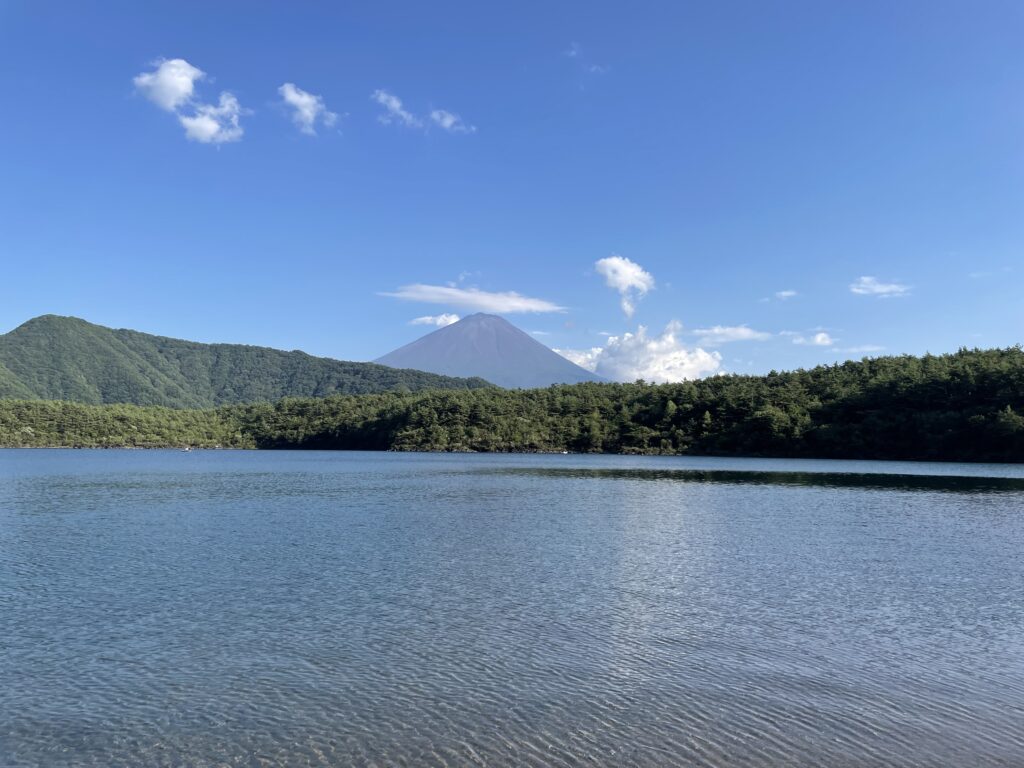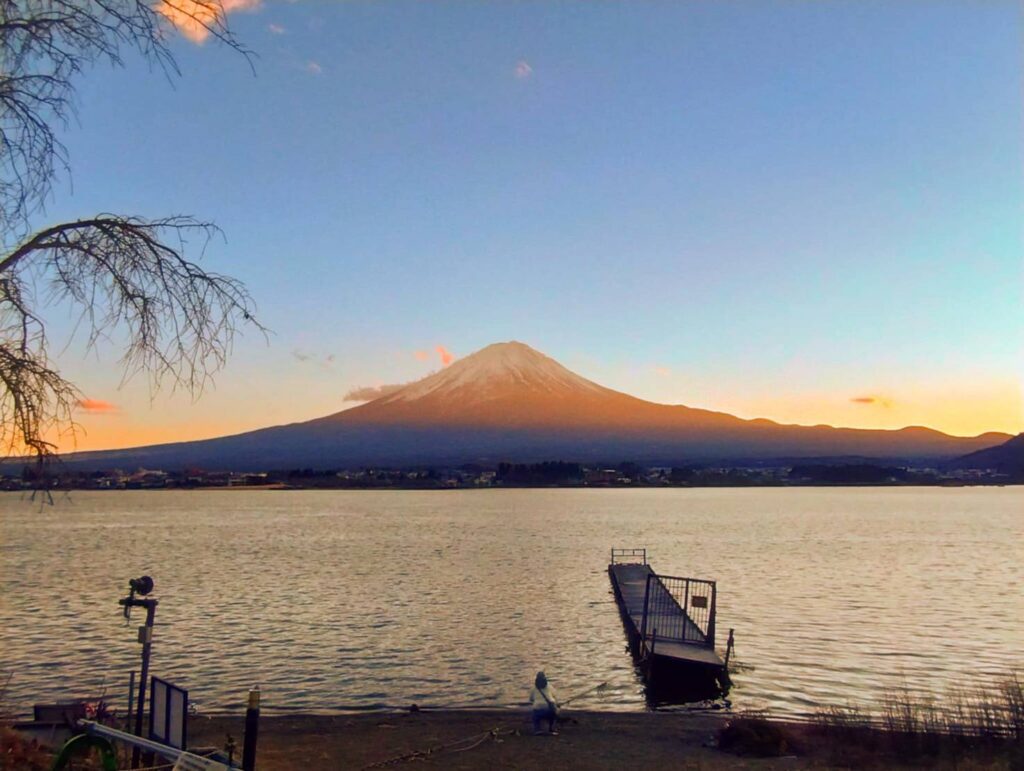Living near Mt. Fuji, I often explore the area by car, and Lake Motosu has become one of my favorite routes for a slow, scenic drive.
On this trip, I combined a short hike up to Nakanokura Pass — the famous “1,000 yen view” spot — with a stop for a local lunch and a relaxing lakeside drive.
The mix of nature, quiet roads, and good food made it one of those days that perfectly captures the calm charm of the Fuji Five Lakes area.
Here’s how I spent the day and what I’d recommend if you want to enjoy Mt. Fuji like a local, at your
Quick Navigation
Hike to the 1,000 Yen Bill Viewpoint: Panoramic Mt. Fuji from Nakanokura Pass
How to Get to the Trailhead (Location, Parking, Tips)
To reach the famous viewpoint featured on the old 1,000 yen bill, head to the Nakanokura Trailhead located near the northern edge of Lake Motosu, in Minobu Town, Yamanashi Prefecture.
- Address: 2926 Nakanokura, Minobu-cho, Minamikoma-gun, Yamanashi 409-3104
- By car: There’s a roadside parking area with space for about 20 cars. It’s located directly along Route 300, and the trail entrance is just a short walk away.
- By bus: Get off at the “Kōan-mae” (浩庵前) bus stop. From there, it’s about a 5–10 minute walk to the trailhead.
- Toilet: A public restroom is available near the trail entrance, including a multipurpose accessible toilet.
- Vending machines: None nearby, so be sure to bring your own drinks.
- Shops: No convenience stores or food stands in the area — prepare snacks in advance.
The trail entrance is marked by a small wooden sign, which can be easy to overlook if you’re not paying attention.
It’s a quiet area with little signage, so using Google Maps and confirming the route in advance is highly recommended.
Pro tip: Since the parking space is limited and unpaved, arrive early if possible — especially during peak seasons like cherry blossom or autumn foliage.
Trail Details: Time, Difficulty, and Scenery
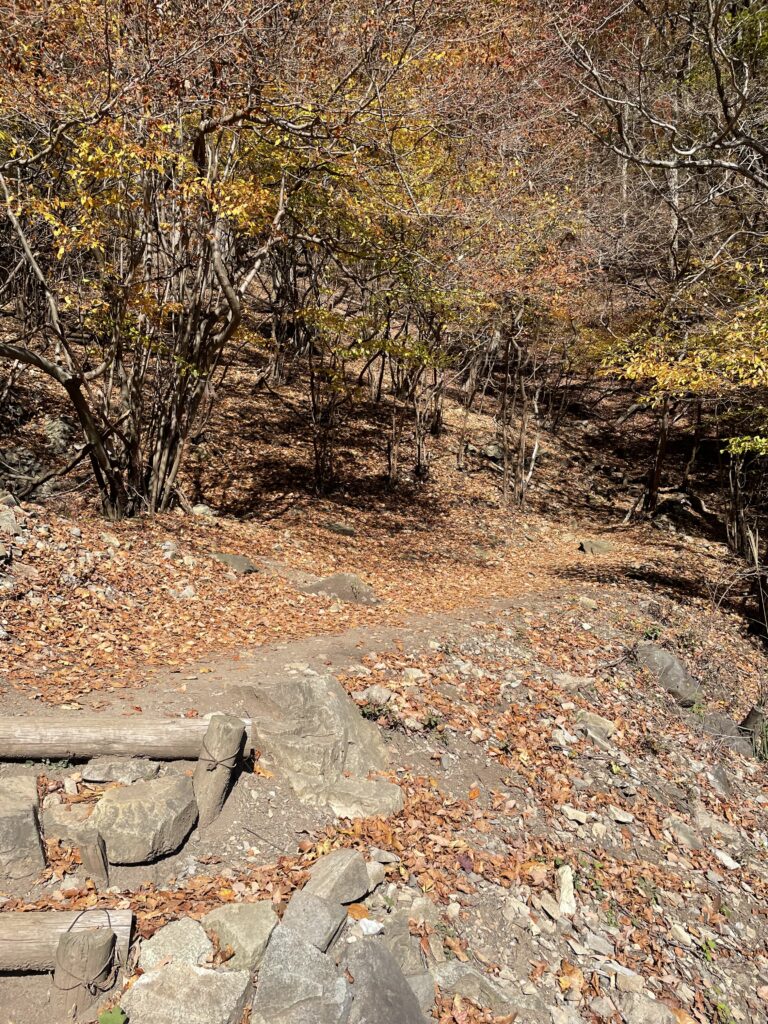
The trail starts from a small side path next to the public toilet near the parking area.
From there, the hike gradually turns into a zigzagging uphill climb through an unpaved gravel path and a series of steep, uneven steps.
⚠️ Important:
Avoid wearing sandals or heels — they can be slippery and unsafe on the trail.
You don’t need professional hiking gear, but comfortable walking shoes or sneakers with good grip are strongly recommended.
The hike takes about 30 to 40 minutes depending on your pace.
To be honest, as someone who doesn’t exercise regularly, I found it pretty challenging!
But for experienced hikers, it may feel more like a light climb.
The Exact Viewpoint Used for the Old 1,000 Yen Bill
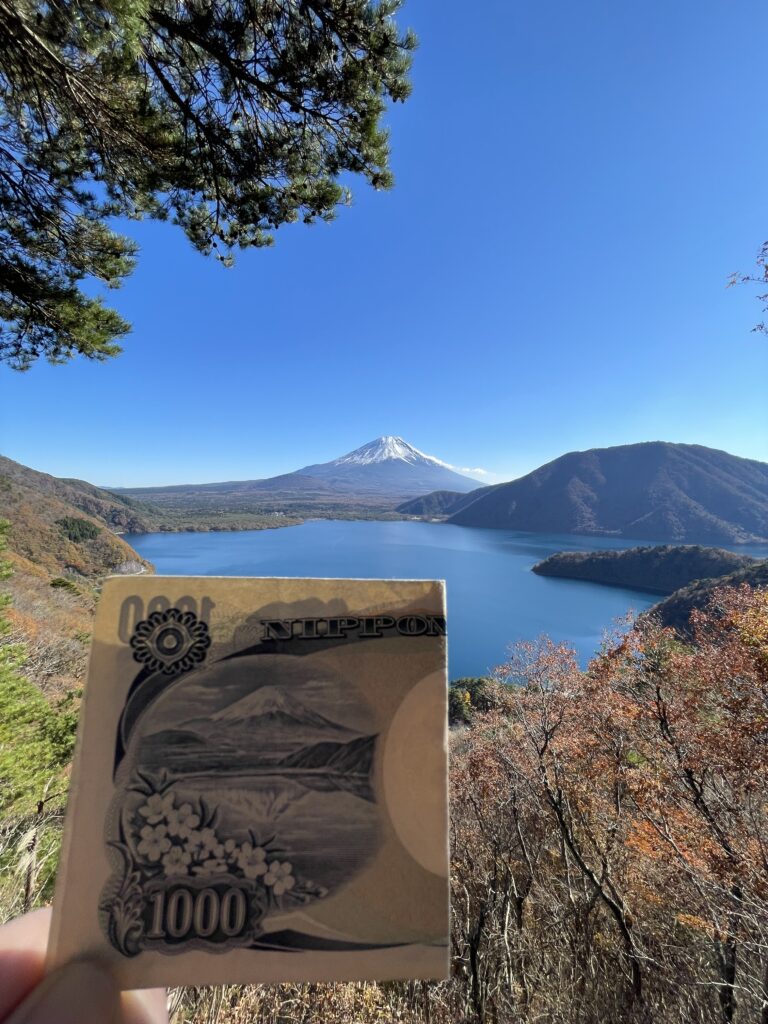
This is the exact spot featured on the back of the old 1,000 yen note — and yes, it looks just like the bill… or even better in real life.
What It Felt Like to See That View in Real Life
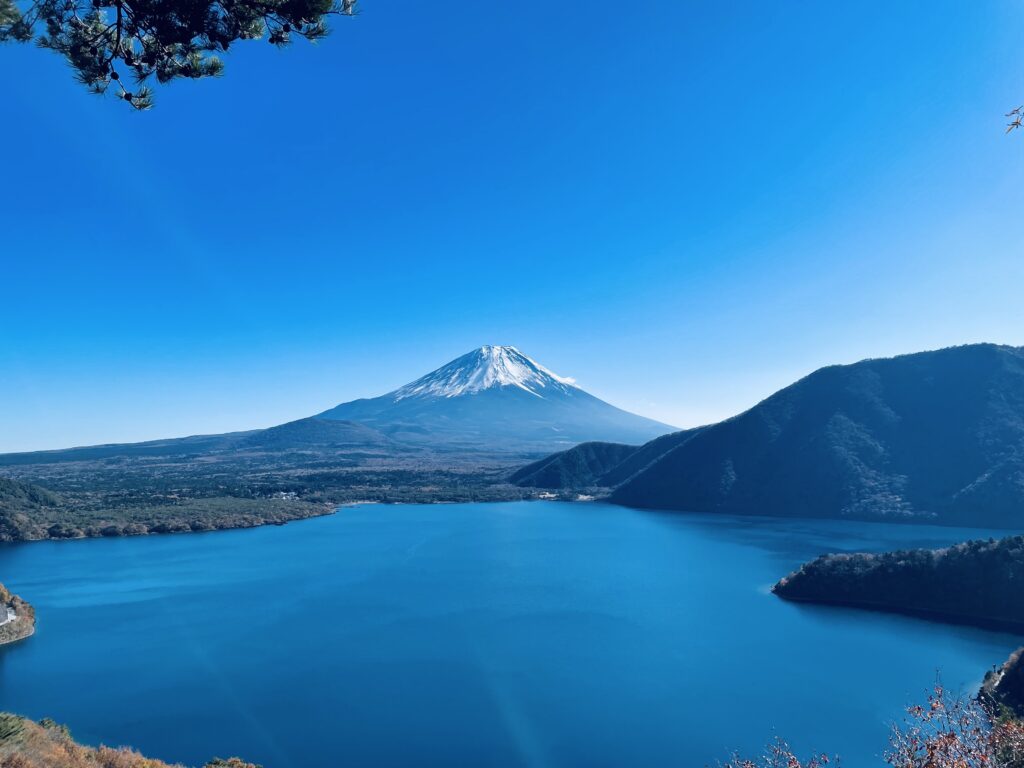
After pushing my way up the winding trail, the moment I reached the top was unforgettable.
My legs had been shaking, and I was out of breath — but as soon as I saw Mt. Fuji rising above Lake Motosu, everything else faded away.
It felt like time paused.
This was one of those rare moments where the view itself heals you.
The combination of Mt. Fuji, the lake, the surrounding mountains, and the wide open sky — all perfectly framed — made me understand exactly why this view was chosen for the 1,000 yen bill.
And the best part?
The reward only comes after you earn it with your own steps. That made it all the more meaningful.
2. Lunch at Honjin Tsukasa: Local Fried Wakasagi Fish You Must Try

After the hike, I was more than ready for a good meal — and I found just the right place.
Honjin Tsukasa, located near Lake Motosu, is a traditional Japanese restaurant that perfectly blends local charm with a spacious, relaxing atmosphere.
Traditional Interior and Plenty of Space
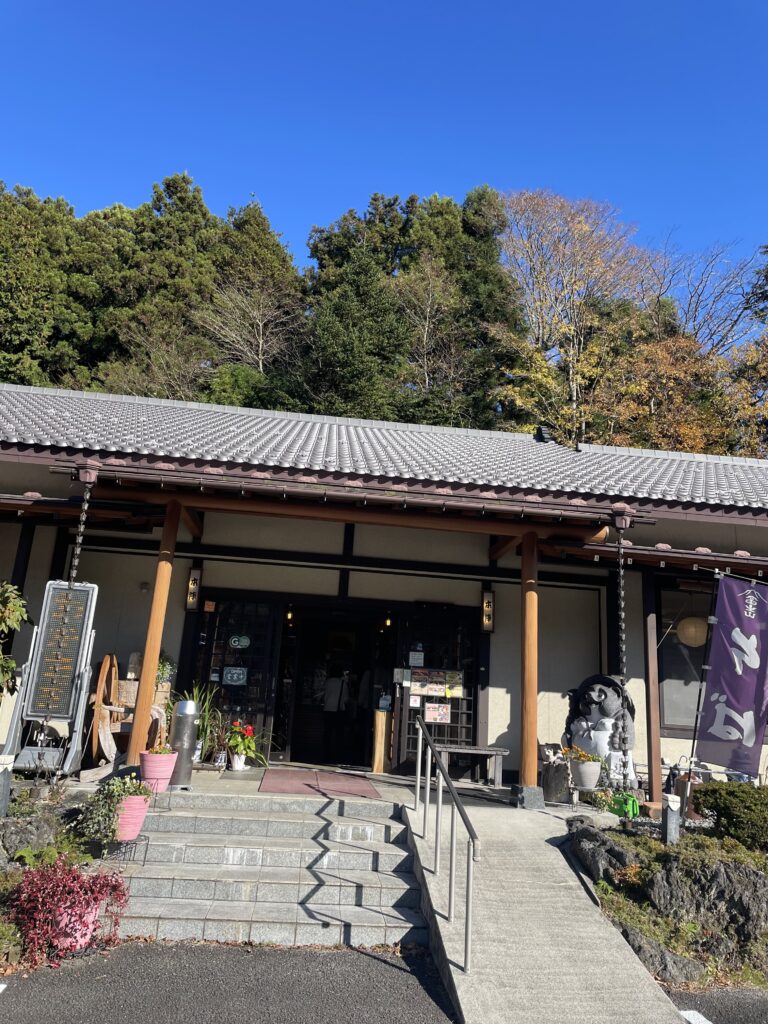
The restaurant has a clean, welcoming feel with tatami mat seating and classic wooden decor — it’s exactly what you’d imagine when thinking of a Japanese-style meal.
With around 140 seats, it’s also a great choice for groups or families traveling together.
A Menu Full of Local Flavors
Honjin Tsukasa serves a wide range of dishes made with local ingredients and seasonal vegetables from the region.
They also offer Yamanashi’s famous hōtō noodles, a lava-stone grilled course, and other regional specialties.
After browsing the menu (and taking way too long to decide), I chose the fried wakasagi set meal — a local favorite.
Taste Review – Crispy, Light, and Packed with Flavor
The wakasagi (Japanese smelt) was crispy on the outside, tender inside, and full of flavor.
It was simple but delicious, and exactly what I needed after the hike.
The meal came with rice, soup, and small side dishes — a perfect balanced, satisfying lunch.
As of now, I don’t think there’s an English menu available.
But don’t worry — the menu includes photos of most dishes, so you can easily point and order.
The staff were kind and helpful, and I had no trouble communicating.
Why This Was the Perfect Post-Hike Meal
After hiking up to the 1,000 yen bill viewpoint, this meal really hit the spot.
It was comforting, flavorful, and rooted in the local food culture.
If you’re exploring the Lake Motosu area, I definitely recommend stopping by — your stomach (and your legs) will thank you.
3. Drive Around Lake Motosu: Peaceful Roads and Hidden Views
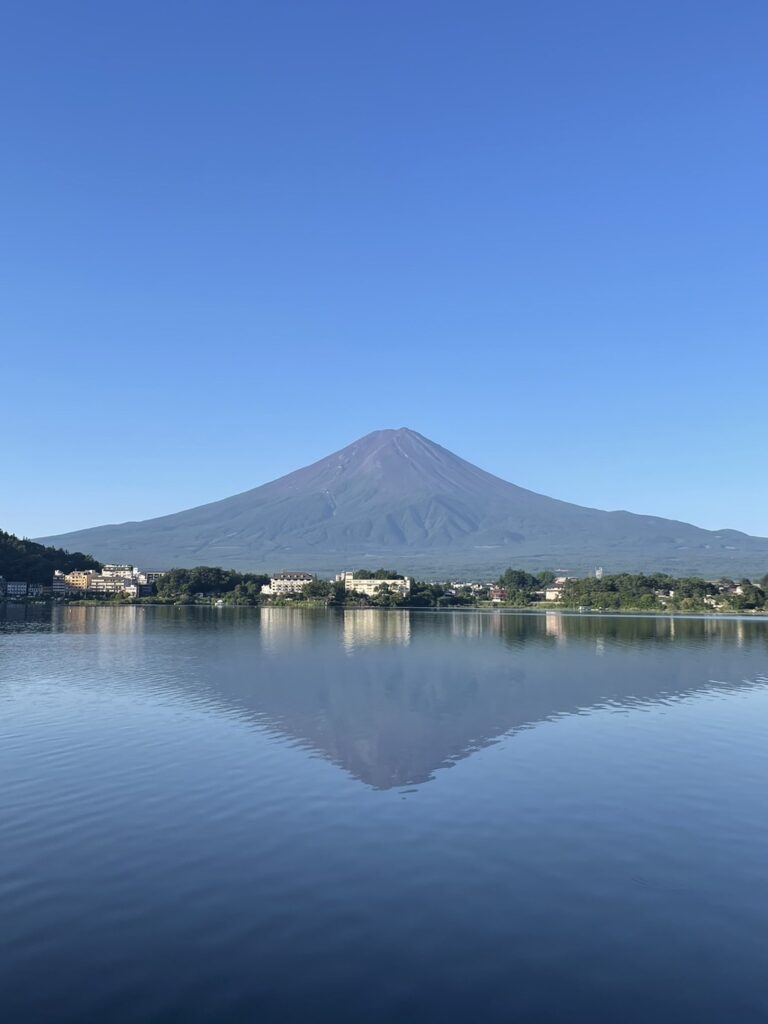
After a rewarding hike and a satisfying lunch, a scenic drive around Lake Motosu is the perfect way to end the day.
This lake is not only the deepest of the Fuji Five Lakes (reaching depths of about 121 meters), but also known for having the clearest water in the region.
Surrounded by Nature – A Drive Through Forest and Calm
The road around Lake Motosu stretches approximately 12 kilometers, and takes you through peaceful forests and woodlands with beautiful views of the lake and Mt. Fuji.
It’s a quiet, low-traffic drive — ideal for those looking to relax and enjoy nature from the car.
You’ll pass through shaded tree-lined roads, open lake views, and small scenic pullouts where you can stop to take photos or simply breathe in the fresh air.
It’s the kind of place where the journey itself becomes part of the destination.
Outdoor Activities by the Lake
If you have extra time, Lake Motosu also offers a wide range of outdoor activities:
- Canoeing and stand-up paddleboarding (SUP) on the calm lake
- Wakasagi fishing, especially in winter
- Camping and hiking in the surrounding mountains and wooded areas
Whether you’re up for some adventure or just want to soak in the natural beauty, Lake Motosu is the perfect backdrop for both.
Summary – A Hidden Gem Day Trip Near Mt. Fuji
This day trip around Lake Motosu combines everything that makes traveling in Japan special — beautiful nature, peaceful moments, local flavors, and views you’ll remember for a lifetime.
Starting with a hike to the 1,000 yen bill viewpoint, followed by a delicious lunch at a traditional restaurant, and finishing with a quiet drive around the lake, the whole route feels like a personal escape into the heart of Yamanashi.
Perfect for Travelers Who Want a Calm, Authentic Experience
If you’re looking to avoid crowds, take things slow, and enjoy a side of Mt. Fuji that most tourists miss, this model course is for you.
It’s not about checking off famous landmarks — it’s about experiencing real Japan at your own pace.
Nature + Local Food + Scenic Drive = Slow Trip Japan at Its Best
From panoramic views and quiet trails to warm meals and forest-lined roads, every stop along the way reflects what Slow Trip Japan is all about:
simple, meaningful travel through nature and culture.
Bonus: Want to Relax Even More?
After the drive, why not finish your day with a hot spring soak?
Check out my local guide to onsen in the Fuji Five Lakes area:
👉 Best Onsen in the Fuji Five Lakes Area: Local Reviews & Scenic Hot Springs

